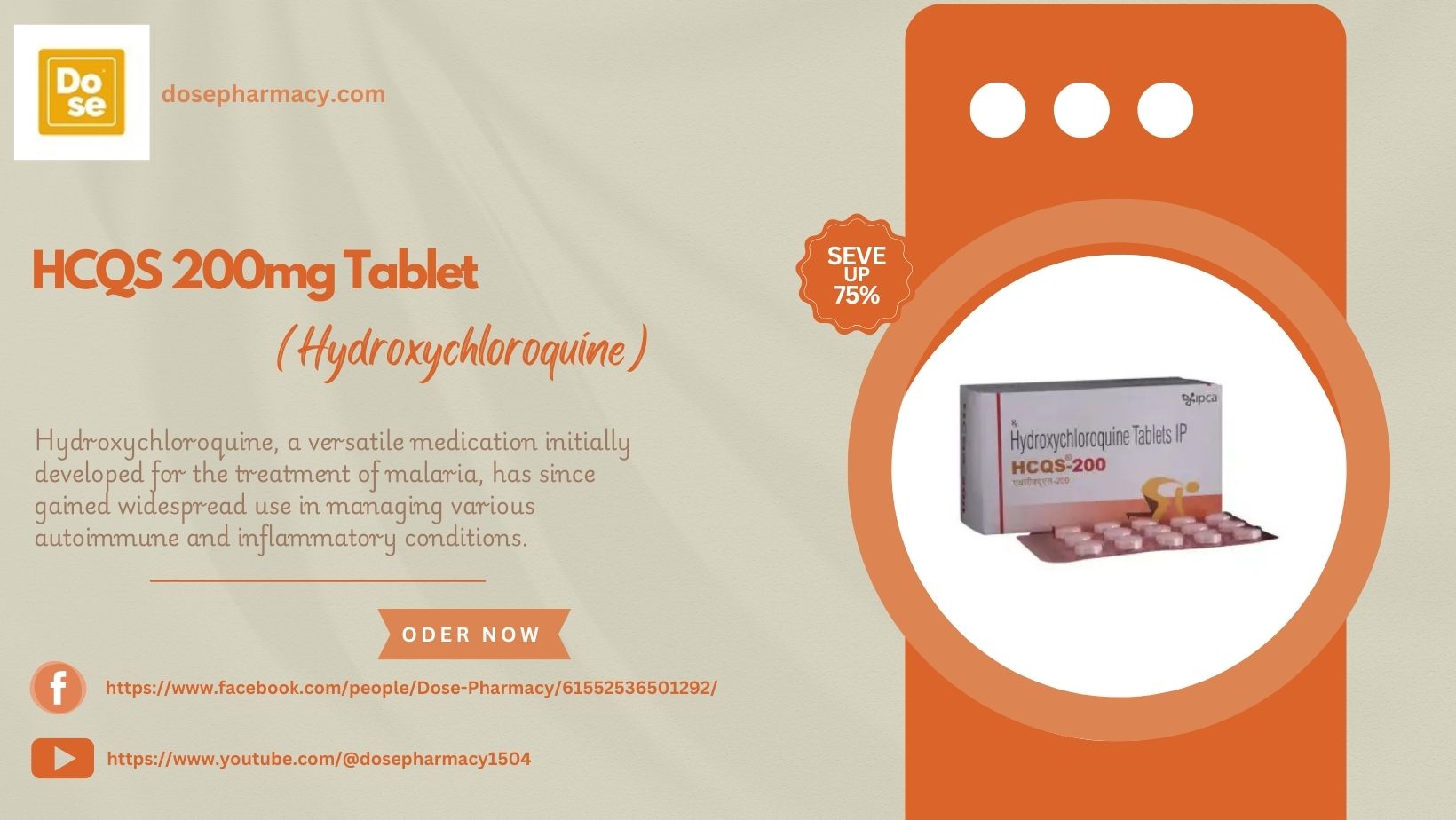Rheumatoid arthritis (RA) is a chronic autoimmune disease that primarily affects the joints, leading to inflammation, pain, and potential deformities. Managing RA requires a combination of medications, lifestyle changes, and sometimes surgery. Among the various treatment options, hydroxychloroquine 200 mg tab has emerged as an essential component of therapy for many RA patients. Originally developed as an antimalarial drug, hydroxychloroquine has proven to be highly effective in managing autoimmune conditions, including rheumatoid arthritis. This article delves into the role of hydroxychloroquine 200 mg in RA treatment, exploring its mechanism of action, benefits, side effects, and usage guidelines.
Understanding Rheumatoid Arthritis
Rheumatoid arthritis is an autoimmune disorder where the immune system mistakenly attacks the synovium (lining of the joints), causing inflammation and progressive joint damage. The condition leads to symptoms such as:
- Joint pain and swelling
- Stiffness, especially in the morning
- Fatigue and weakness
- Loss of joint function
- Deformities in severe cases
RA is a systemic disease, meaning it can also affect other organs such as the lungs, heart, and eyes. Early diagnosis and appropriate treatment are crucial to managing the disease and preventing severe complications.
What is Hydroxychloroquine 200 mg?
Hydroxychloroquine is a disease-modifying antirheumatic drug (DMARD) that helps control RA by modulating the immune system. It is commonly prescribed in a 200 mg dose, which can be adjusted depending on the patient’s needs. Although it was initially used for malaria treatment, its immunomodulatory effects have made it an integral part of RA management.
How Hydroxychloroquine Works in RA
Hydroxychloroquine does not act as a pain reliever like NSAIDs (Non-Steroidal Anti-Inflammatory Drugs) but instead modifies the immune response to reduce disease progression. Its key mechanisms of action include:
- Suppressing Immune Overactivity: Hydroxychloroquine reduces the immune system’s tendency to attack the body’s own tissues, thus decreasing inflammation.
- Inhibiting Antigen Processing: It interferes with antigen-presenting cells, thereby limiting the activation of inflammatory pathways.
- Blocking Cytokine Release: Hydroxychloroquine reduces the release of inflammatory cytokines like TNF-alpha and interleukin-1.
- Increasing pH in Cells: By altering the pH within immune cells, it prevents certain autoantigens from triggering a harmful immune response.
- Protecting Against Oxidative Damage: It has antioxidant properties that help reduce tissue damage caused by chronic inflammation.
Benefits of Hydroxychloroquine in RA Treatment
1. Slows Disease Progression
Unlike painkillers that provide symptomatic relief, hydroxychloroquine modifies the underlying disease process, preventing joint damage and disability.
2. Mild Side Effect Profile
Compared to other DMARDs like methotrexate, hydroxychloroquine is better tolerated and has a lower risk of severe side effects such as liver toxicity or immune suppression.
3. Combination Therapy
Hydroxychloroquine is often used in combination with methotrexate and sulfasalazine (a regimen known as triple therapy) for better disease control.
4. Additional Health Benefits
Studies suggest hydroxychloroquine may also reduce cardiovascular risks, which is significant since RA patients have a higher likelihood of developing heart disease.
5. Long-Term Use Feasibility
Many patients can take hydroxychloroquine for years without major issues, making it a suitable long-term treatment option for RA.
Dosage and Administration
Hydroxychloroquine is available in 200 mg tablets, and the usual RA treatment regimen includes:
- Initial Dose: 400 mg daily (split into two 200 mg doses)
- Maintenance Dose: 200 mg once daily (or 400 mg every other day, depending on patient response)
Patients are advised to take the medication with food or milk to reduce gastrointestinal discomfort.
Potential Side Effects
While hydroxychloroquine is generally safe, it does have potential side effects, including:
- Gastrointestinal Issues: Nausea, diarrhea, and stomach cramps
- Skin Reactions: Rash or pigmentation changes
- Ocular Toxicity: Long-term use can cause retinal damage, leading to vision problems (patients should undergo regular eye exams every 6–12 months)
- Headaches and Dizziness
Most side effects are mild and reversible upon discontinuation, but eye-related complications require careful monitoring.
Precautions and Warnings
- Eye Health Monitoring: Patients should get baseline and periodic eye exams to detect early signs of retinal toxicity.
- Liver and Kidney Function: Those with liver or kidney disease should use hydroxychloroquine cautiously.
- Pregnancy Considerations: Hydroxychloroquine is generally considered safe during pregnancy but should be used under medical supervision.
- Avoid Alcohol: Combining hydroxychloroquine with alcohol may increase the risk of liver toxicity.
Comparing Hydroxychloroquine to Other RA Medications
| Medication | Mode of Action | Effectiveness | Side Effects |
|---|---|---|---|
| Hydroxychloroquine | Immune modulation | Moderate | Low |
| Methotrexate | Folate pathway inhibition | High | Moderate-High |
| Sulfasalazine | Anti-inflammatory | Moderate | Moderate |
| Biologics | TNF inhibitors, IL inhibitors | High | High (risk of infections) |
Hydroxychloroquine is often chosen as a first-line treatment due to its milder side effect profile and effectiveness in early-stage RA.
Conclusion
Hydroxychloroquine 200 mg plays a vital role in the treatment of rheumatoid arthritis, particularly for mild to moderate cases. It helps reduce inflammation, slow disease progression, and improve joint function while maintaining a safer profile compared to other DMARDs. Though it may take several months to show full effects, it remains a cornerstone in RA management due to its effectiveness and long-term safety. However, regular eye examinations and medical supervision are necessary to prevent potential complications. By using hydroxychloroquine in combination with other treatments and a healthy lifestyle, RA patients can achieve better disease control and enhanced quality of life.
